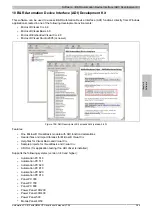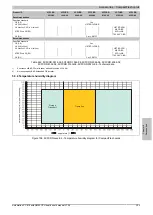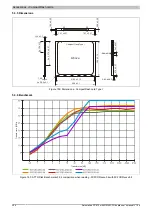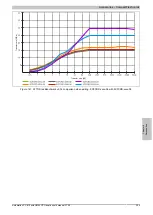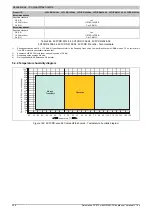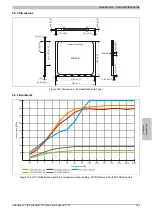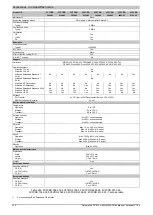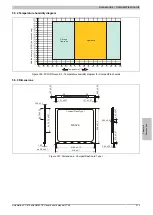
Accessories • CompactFlash cards
Chapter 6 Accessories
Automation PC 810 with GM45 CPU board user's manual V1.28
299
5 CompactFlash cards
5.1 General information
CompactFlash cards are storage media that are easy to replace. Due to their robustness against environmental
influences (e.g. temperature, shock, vibration, etc.), CompactFlash cards are ideal for use as storage media in
industrial environments.
5.2 General information
In order to be suited for use in industrial automation, CompactFlash cards must be highly reliable. To make this
possible, the following is very important:
•
Flash technology used
•
Efficient algorithm for maximizing the lifespan
•
Good mechanisms for detecting and fixing errors in the flash memory
5.2.1 Flash technology
Currently, CompactFlash cards are available with MLC (Multi Level Cell) and SLC (Single Level Cell) flash blocks.
SLC flash memory has a lifespan that is 10 times longer than MLC, which is why only CompactFlash cards with
SLC flash blocks are suited for industrial applications.
5.2.2 Wear leveling
Wear leveling is an algorithm that can be used to maximize the lifespan of a CompactFlash card. There are three
different algorithms:
•
No wear leveling
•
Dynamic wear leveling
•
Static wear leveling
The basic idea behind wear leveling is to distribute data over a broad area of blocks or cells on the data carrier so
that the same areas don't have to be cleared and reprogrammed over and over again.
5.2.2.1 No wear leveling
The earliest CompactFlash cards didn't have an algorithm for maximizing the lifespan. The lifespan of a Compact-
Flash card was determined only by the guaranteed lifespan of the flash blocks.
5.2.2.2 Dynamic wear leveling
Dynamic wear leveling makes it possible to utilize unused flash blocks when writing to a file.
If the data carrier is 80% full with files, then only 20% can be used for wear leveling.
The lifespan of the CompactFlash card is therefore dependent on the amount of unused flash blocks.
5.2.2.3 Static wear leveling
Static wear leveling also monitors which data is rarely changed. From time to time, the controller then moves this
data to blocks that have already been frequently programmed in order to prevent further wear on those cells.
5.2.3 ECC error correction
Bit errors can be caused by inactivity or when a certain cell is operated. Error Correction Coding (ECC) implemented
via hardware or software can detect and correct many errors of this type.
5.2.4 S.M.A.R.T. support
Self-Monitoring, Analysis and Reporting Technology (S.M.A.R.T. for short) is an industry standard for mass storage
devices that has been introduced to monitor important parameters and quickly detect imminent failures. Critical
performance and calibration data is monitored and stored in order to help predict the probability of errors.

